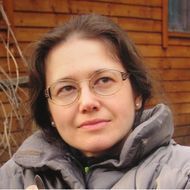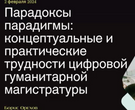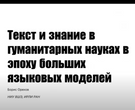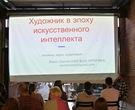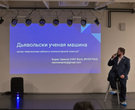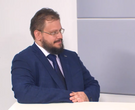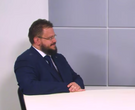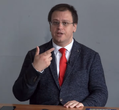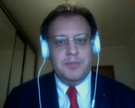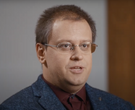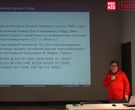- A
- A
- A
- АБB
- АБB
- АБB
- А
- А
- А
- А
- А
- Национальный исследовательский университет «Высшая школа экономики»
- Факультет гуманитарных наук
- Школа лингвистики
- Мероприятия
- Научный семинар Школы лингвистики
-
Школа
- О школе
- Сотрудники
- Семинары
-
Исследовательские подразделения
-
- Международная лаборатория языковой конвергенции
- Центр «Русский как иностранный»
- Центр цифровых гуманитарных исследований
- Центр языка и мозга
- Лаборатория по формальным моделям в лингвистике
- Лаборатория «Корпусные исследования»
- Лаборатория языков Кавказа
- Лаборатория учебных корпусов
- Лаборатория теоретической и полевой фольклористики
- Лаборатория социогуманитарных исследований Севера и Арктики
-
-
Проекты
-
Проекты сотрудников
-
Проекты студентов и аспирантов
-
Завершённые проекты
- Некомпозициональные конструкции в эритажном русском
- Компьютерные и лингвистические ресурсы для поддержки шугнанского языка
- Лингвоспецифическая разметка китайских текстов в Русско-китайском параллельном корпусе НКРЯ
- Цифровой архив: создание корпуса журнала "Отечественные записки"
- Создание лингвокультурологического подкаста о России для иностранцев «Yellow Blue Bus» (Я люблю вас)
- База данных русских идиом
- Компьютерные и корпусные инструменты для иранистических исследований
- Русский разговорный клуб
- Шугнанские глаголы в типологическом освещении
- Создание академического онлайн-словаря персидского языка
-
- Международное сотрудничество
- Экспедиции
- Ресурсы
- Препринты
- Наша книжная полка
-
Образовательные программы
- Бакалаврская программа «Фундаментальная и компьютерная лингвистика»
- Магистерская программа «Компьютерная лингвистика»
- Магистерская программа «Лингвистическая теория и описание языка»
- Магистерская программа «Русский как иностранный во взаимодействии языков и культур»
- Магистерская программа «Цифровые методы в гуманитарных науках»
- Аспирантская школа по филологическим наукам
Адрес: 105066, г. Москва,
Старая Басманная ул., д. 21/4
Телефон: +7 (495) 772-95-90 доб. 22734
E-mail: ling@hse.ru
Редакторы сайта — Наталья Борисовна Пименова, Максим Олегович Бажуков, Константин Евгеньевич Сатдаров
- Международная лаборатория языковой конвергенции
- Лаборатория «Корпусные исследования»
- Лаборатория по формальным моделям в лингвистике
- Лаборатория языков Кавказа
- Лаборатория социогуманитарных исследований Севера и Арктики
- Научно-учебная лаборатория учебных корпусов
- Центр «Русский как иностранный»
- Научно-учебные группы
- Каталог проектов по компьютерной лингвистике
- Проекты, поддерживаемые грантами
- Русский язык для всех
- Лингвистический кружок для школьников
- Лингвистика в Центре открытого образования
Школа лингвистики была образована в декабре 2014 года. Сотрудники школы преподают на образовательных программах по теоретической и компьютерной лингвистике в бакалавриате и магистратуре. Лингвистика, которой занимаются в школе, — это не только знание иностранных языков, но прежде всего наука о языке и о способах его моделирования. Научные группы школы занимаются исследованиями в области типологии, социолингвистики и ареальной лингвистики, корпусной лингвистики и лексикографии, древних языков и истории языка. Кроме того, в школе создаются лингвистические технологии и ресурсы: корпуса, обучающие тренажеры, словари и тезаурусы, технологии для электронного представления текстов культурного наследия.
Труды института русского языка им. В.В. Виноградова. 2025. № 3(45). С. 296-305.
В кн.: Двадцать вторая Конференция по типологии и грамматике для молодых исследователей. Тезисы докладов (Санкт-Петербург, 27–29 ноября 2025 г.).. СПб.: ИЛИ РАН, 2025. С. 32-35.
arxiv.org. Computer Science. Cornell University, 2024

Научный семинар Школы лингвистики
The semantic role source in the space domain is the role taken by a
landmark of a motion event, in which a trajector moves away from the
landmark. In Mary goes from Moscow to Milan, Milan is the landmark of
the spatial relation and takes the role of source. Similar to source
but not necessarily connected with motion is the role origin, as in A
woman from Moscow. In the domain of causal relations, source and
origin are typically connected with roles taken by participants that
initiate an event, such as agent and cause. Diachronically, agent
markers may arise from morphemes that were earlier limited to source
or origin, or from genitive markers. The relation between
source/origin and genitives, which is cross-linguistically very
frequent, is based on the part/whole relation and on a metaphor by
which possessors are conceived as wholes and possessed entities are
conceived as being their parts.
A comparatively lesser investigated issue connected with the space
domain is the so-called source-goal asymmetry, which includes various
characteristics of the two roles. In general, goals of motion are
expressed more frequently and in more fine-grained ways than sources.
In addition, unlike sources, which often behave as adjuncts, goals
tend to share properties with verbal arguments. Patterns of polysemy
within systems of spatial marking also point in the same direction:
static locations are commonly coded synchronically by the same markers
as goals of motion, and in a way distinct from sources. Notably, this
pattern of polysemy does not mean that diachronic mergers of source
and location are not attested: much to the contrary, many individual
locative markers in European languages – such as French dedans
‘inside’ or Ancient Greek ópisthe(n) ‘behind’ – often go back to
ablative expressions, suggesting an earlier ablative-locative
transfer. However, it is remarkable that once a marker acquires the
locative meaning, it loses the original ablative meaning. Thus, while
the extension from source to location is attested, possibly even more
frequently than commonly believed, polysemy tends to be avoided.
Note, however, that special types of landmarks (spatial referents,
human beings) often allow some overlap in the use of ablative and
locative encoding, and can be at the origin of ablative-locative
transfers. The encoding of certain spatial relations depends on the
type of landmark, and non-conventional landmarks (e.g. human beings)
often require special types of encoding. With time, such differential
marking may give rise to markers that are no longer obviously related
to the original spatial concept. Differential marking is relevant in
the domain of causal relations as well, as human landmarks taking the
role of cause can be kept distinct from agents if they are not
controllers.
In my talk, I will discuss some general features of the semantic role
source based on cross-linguistic evidence, and then will concentrate
on source encoding in Ancient Greek. Issues discussed will include
semantic extension and polysemy in the space domain as well as in
other cognitive domains, asymmetries, and differential marking.
Афиша доклада:Научный семинар 27.05 (PDF, 345 Кб)
- О ВЫШКЕ
- Цифры и факты
- Руководство и структура
- Устойчивое развитие в НИУ ВШЭ
- Преподаватели и сотрудники
- Корпуса и общежития
- Закупки
- Обращения граждан в НИУ ВШЭ
- Фонд целевого капитала
- Противодействие коррупции
- Сведения о доходах, расходах, об имуществе и обязательствах имущественного характера
- Сведения об образовательной организации
- Людям с ограниченными возможностями здоровья
- Единая платежная страница
- Работа в Вышке
- ОБРАЗОВАНИЕ
- Лицей
- Довузовская подготовка
- Олимпиады
- Прием в бакалавриат
- Вышка+
- Прием в магистратуру
- Аспирантура
- Дополнительное образование
- Центр развития карьеры
- Бизнес-инкубатор ВШЭ
- Образовательные партнерства
- Обратная связь и взаимодействие с получателями услуг
-
http://www.minobrnauki.gov.ru/
Министерство науки и высшего образования РФ
-
https://edu.gov.ru/
Министерство просвещения РФ
-
http://www.edu.ru
Федеральный портал «Российское образование»
-
https://elearning.hse.ru/mooc
Массовые открытые онлайн-курсы
- © НИУ ВШЭ 1993–2025 Адреса и контакты Условия использования материалов Политика конфиденциальности Карта сайта
- Редактору


